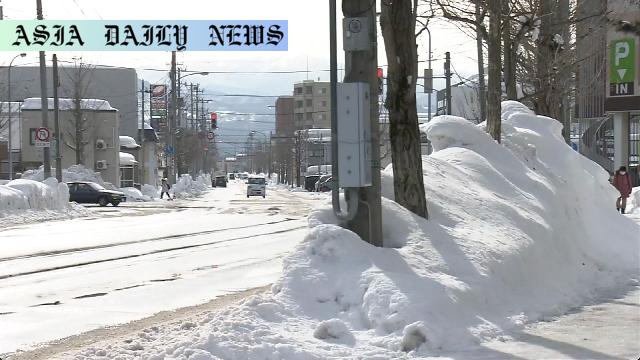coldest spell, Japan braces for season’s coldest winter spell, facing heavy snowfall, power outages, and travel disruptions in impacted areas.

Introduction: An Unprecedented Cold Spell Expected in Japan
Japan is set to experience the harshest winter conditions of the season as the Meteorological Agency issues an emergency alert, warning citizens of an approaching cold spell. This unprecedented weather event is expected to begin Tuesday and continue for about a week, delivering heavy snowfall, snowstorms, rough seas, and other extreme conditions across large parts of the country.
Regions at Risk: Mapping the Worst-affected Areas
The Meteorological Agency has identified several regions that will bear the brunt of this weather anomaly. These include the Sea of Japan coast, stretching from the northern to the western regions. Specific prefectures such as Niigata, Hokuriku, Hokkaido, Tohoku, and Gifu are forecasted to experience significant snowfall of up to 70 centimeters by late Tuesday afternoon. Southern areas such as Kyushu and Shikoku, often spared from such conditions, are also on alert for substantial snow accumulation.
Escalating Snowfall: What to Expect Over the Coming Days
By late Wednesday afternoon, snowfall levels could rise dramatically, with Niigata facing up to 100 centimeters and regions like Tohoku, Gifu, Kinki, and Shikoku also seeing increased accumulation. Citizens living in these regions are advised to monitor ongoing forecasts and plan accordingly to minimize disruptions and ensure safety.
Potential Risks: Avalanches, Power Outages, and Tornadoes
Snowstorms and turbulent weather conditions are expected to create numerous challenges. The Meteorological Agency has flagged the potential for widespread power outages, fallen trees, avalanches, and even lightning strikes or tornadoes in some areas due to atmospheric instability. Citizens should be cautious and take proactive measures to mitigate these risks.
Transportation Disruptions: Impacts on Air Travel
Heavy snowfall is already affecting air travel throughout Japan. Airlines such as ANA and JAL have canceled a combined 29 flights, including routes involving major airports like Haneda, Fukuoka, and New Chitose. These numbers are expected to grow as conditions worsen, and passengers are encouraged to visit airline websites for the latest updates before traveling.
Preparation Essentials: Staying Safe During the Coldest Spell
Weather officials are urging residents to prepare essential winter gear now before the full impact of the storm is felt. Recommended items include sufficient heating fuel, winter clothing, portable batteries, and emergency supplies. Moreover, altering daily schedules to accommodate for travel delays or cancellations is strongly advised to ensure safety and convenience.
Long-term Outlook and Final Thoughts
This cold spell is expected to last approximately one week, tapering off after Thursday. However, its intensity and wide-reaching effects make it one of the most significant winter weather events this season. Individuals and communities must remain vigilant, follow safety protocols, and stay informed through regular updates from the Meteorological Agency and other reliable sources.
Commentary
Weather Alert: Preparing for Extreme Conditions
The impending cold spell in Japan is a stark reminder of how unpredictable weather patterns can disrupt daily life. The detailed forecasts issued by the Meteorological Agency provide a valuable heads-up, allowing citizens to make preemptive preparations to withstand such a significant event. This level of preparedness and public communication is essential in mitigating risks associated with severe weather conditions.
Community Resilience During Adverse Events
Events like these highlight the importance of community resilience. As individuals prepare for the upcoming week, collective efforts can make a significant difference in ensuring safety and minimizing disruptions. Sharing resources, checking on vulnerable neighbors, and adhering to official warnings are ways communities can unite during such challenges.
The Bigger Picture: Adapting to a Changing Climate
While extreme winter weather is a familiar event in many parts of Japan, the intensity and frequency of such occurrences raise questions about the broader context of climate change. This episode underscores the need for sustainable urban planning and infrastructure capable of withstanding increasingly erratic weather phenomena. As we move forward, governments and citizens alike must prioritize climate adaptation measures to reduce vulnerabilities during similar events in the future.


